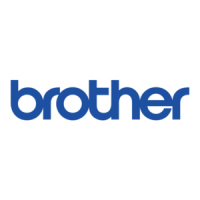
Do you have a question about the Brother XR-65T and is the answer not in the manual?
| Built-in Stitches | 65 |
|---|---|
| Needle Threader | Yes |
| Free Arm | Yes |
| Bobbin Type | Drop-in |
| Stitch Length | 4mm |
| Stitch Width | 5mm |
| Dimensions | 445mm x 210mm x 340mm |
Essential safety precautions to prevent electric shock, including unplugging after use and before cleaning.
Safety warnings for operation, intended use, maintenance, and handling of the machine.
Specific electrical safety instructions for users in the United Kingdom regarding plug and fuse.
Electrical safety instructions for users in other countries regarding plug suitability and fuse fitting.
Crucial warning against connecting wires to the incorrect earth terminal to prevent electric shock.
Instructions for connecting the power cord plug to the machine and the wall outlet.
Explanation of the main power and sewing light switch function.
Guidance on safe practices during sewing, including keeping hands away from moving parts.
Recommendations for maintaining the machine's longevity and proper cleaning.
Instructions on how to handle malfunctions and necessary adjustments.
Procedure for checking needle straightness and sharpness for smooth sewing.
Step-by-step guide for changing the presser foot on snap-on type machines.
Instructions for selecting stitch patterns using the dial and understanding pattern numbers.
Step-by-step guide for winding thread onto the bobbin correctly.
Instructions for placing an additional spool pin for twin needle sewing.
Procedure for threading the twin needle separately for each needle.
Guide to identifying and correcting thread tension issues for proper stitch quality.
Instructions for performing a straight stitch, including starting and finishing sewing.
Using reverse stitching to secure seams at the end of sewing.
Guidance on using straight and triple stretch stitches for specific fabric types.
Instructions for selecting and sewing zigzag stitches, including reinforcement.
How to create a satin stitch (dense zigzag) for decorative purposes.
Guidance on using blind hem stitches for non-stretch and stretch fabrics.
Instructions for creating a decorative picot edge on lightweight fabrics.
Guidance on using the elastic stitch for mending, sewing elastic, and joining fabrics.
Instructions for using stitches to join fabric for projects like patchwork.
How to sew a scallop stitch for decorative edging on materials.
Guidance on using decorative stitches for top stitching and smocking.
Instructions for joining fabric pieces with a space for patchwork projects.
Guidance on using elastic overlock stitches to join and finish seams on stretch materials.
How to use the feather stitch for decorative purposes or hemming fabrics.
Instructions for using the triple zigzag stretch stitch on heavyweight stretch fabrics.
Step-by-step guide for creating a one-step buttonhole, including marking and adjustments.
Illustrates how to set the buttonhole presser foot scale for odd-shaped buttons.
First procedure to correct buttonhole sewing errors.
Second procedure to correct buttonhole sewing errors.
Instructions for inserting a zipper using the zipper foot.
Steps for gathering fabric using a straight stitch.
Instructions for using the walking foot for sewing difficult-to-feed fabrics.
Guide for using the spring-action quilting foot for darning and quilting.
Instructions for using the 1/4-inch quilting foot for precise seam allowances.
Safety precautions and steps for replacing the sewing machine light bulb.
Step-by-step guide for cleaning the sewing machine, including the shuttle race.
Troubleshooting guide for common sewing difficulties and their solutions.
